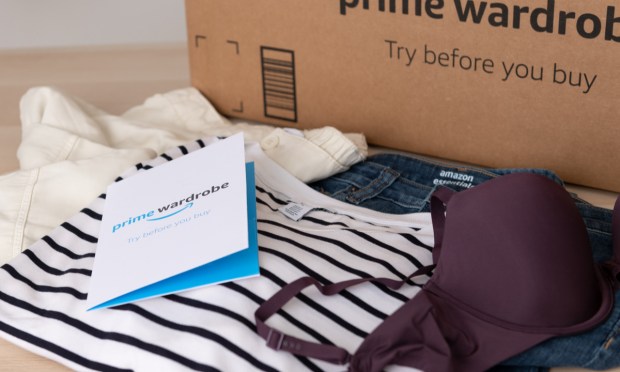Try Before You Buy — What Brands and Retailers Are Doing It and Who’s Actually Using It?

We all shop online. That’s probably a safe bet to make these days, right? And while online shopping certainly has its pros, it also has its cons, and at times can never really compare to the real life, in-person experience. Solutions like augmented reality (AR) look to bridge the gap between online shopping and in-store shopping, but the reality is (lame pun intended) we just aren’t there yet.
So, how do consumers still get the in-store experience of trying on new styles and colors and sizes without racking up their payment of choice? By trying now and buying later it seems.
AR Has a Long Way to Go
Even in 2023, augmented reality still has a long way to go. Last week, PYMNTS spoke to Wayne Liu, chief growth officer and president of the Americas at Perfect Corp., about the company’s efforts to carve out a market share in the ever-growing space. “We’re going very deep to go very broad,” Liu said.
Thus AI technology and the integration of AI GC (artificial intelligence with generative content) capabilities.
In addition, Perfect Corp. has strategic plans to expand its scope and establish a presence within the fashion industry. Leveraging its expertise, the company aims to venture into accessories, jewelry and apparel. The goal is to strengthen its technological infrastructure by overcoming limitations and meeting the demands of fashion-conscious customers.
Their objective is also to ensure that technology is within reach of a wide range of shoppers, ending its exclusivity to a privileged few. They describe this approach as “democratizing technology.”
Read more: Virtual Try-On Software Searches for Competitive Advantage as Big Tech Steps In
But with that, AR still has a long way to go. And that’s why Try Before You Buy has potential.
Try Before You Buy Experience
The aim of the Try Before You Buy experience is to enable customers to try out items in the convenience of their own homes.
By eliminating upfront charges, consumers can physically engage with the products, immersing themselves in the experience that traditional in-store shopping provides. The feature helps bridge the gap between convenience and the desire for an authentic exploration of products.
Customers often face a dilemma when upfront charges are required, particularly if they need to order multiple sizes or prefer to experiment with different fits. By providing this alternative, Amazon empowers customers to discover the ideal fit, minimizing the likelihood of returns.
Why Consumers Use Try Before You Buy
“For myself: the ability to try totally new style and for my kids: trying shoes in different sizes,” said Olivia March Dreizen Howell on Twitter when asked what the appeal of using try before you buy.
Consider your own online shopping experiences. Are you typically inclined to make an immediate purchase when you come across a dress or a pair of pants? Perhaps you are. Alternatively, do you find yourself adding these items to your cart and taking some time to contemplate whether they truly justify the spend?
It’s not too hard to understand why consumers are anxious or uncertain when making online purchases, particularly clothing, footwear or cosmetics. The Try Before You Buy feature taps into this psychology.
Also, cognitive dissonance occurs when individuals experience discomfort due to conflicting thoughts or actions. When customers try items before purchasing, they form a sense of ownership and familiarity and are less likely to experience cognitive dissonance after making a purchase, reducing the likelihood of returning the product.
Consumers have a tendency to base their judgment on the first piece of information they receive. When customers receive a product to try, they form an initial perception of its value, which influences how they evaluate its price later on. This phenomenon can result in a greater likelihood of keeping the product, as consumers perceive its value to be higher than the price they paid.
Implications for Brands and Retailers
Through the implementation of the Try Before You Buy option, brands and retailers have an opportunity to amplify customer satisfaction, grant them a greater sense of authority over their choices, and cultivate a positive shopping experience. This can transform a customer into a loyal patron. The feature also can reduce return rates.
Try Before You Buy can influence conversion rates. It reduces any apprehension towards purchasing and enhances the probability of customers following through with their transactions. It’s a powerful tool for brands and retailers to convert browsers into paying customers.
Try Before You Buy could eliminate charging for shipping or even for returns — a move witnessed by many consumers as brands and retailers look to cover costs.
Read also: Consumers Chafe as Clothing Retailers Tighten Returns Rules
Who’s Doing It?
While Amazon is implementing Try Before You Buy, other companies have also recognized its potential. Online retailers like Zappos, Warby Parker, and Stitch Fix have adopted similar approaches in the fashion and eyewear industries.
Additionally, some beauty subscription boxes like Birchbox and Ipsy offer personalized samples for customers to try before purchasing full-sized products.

